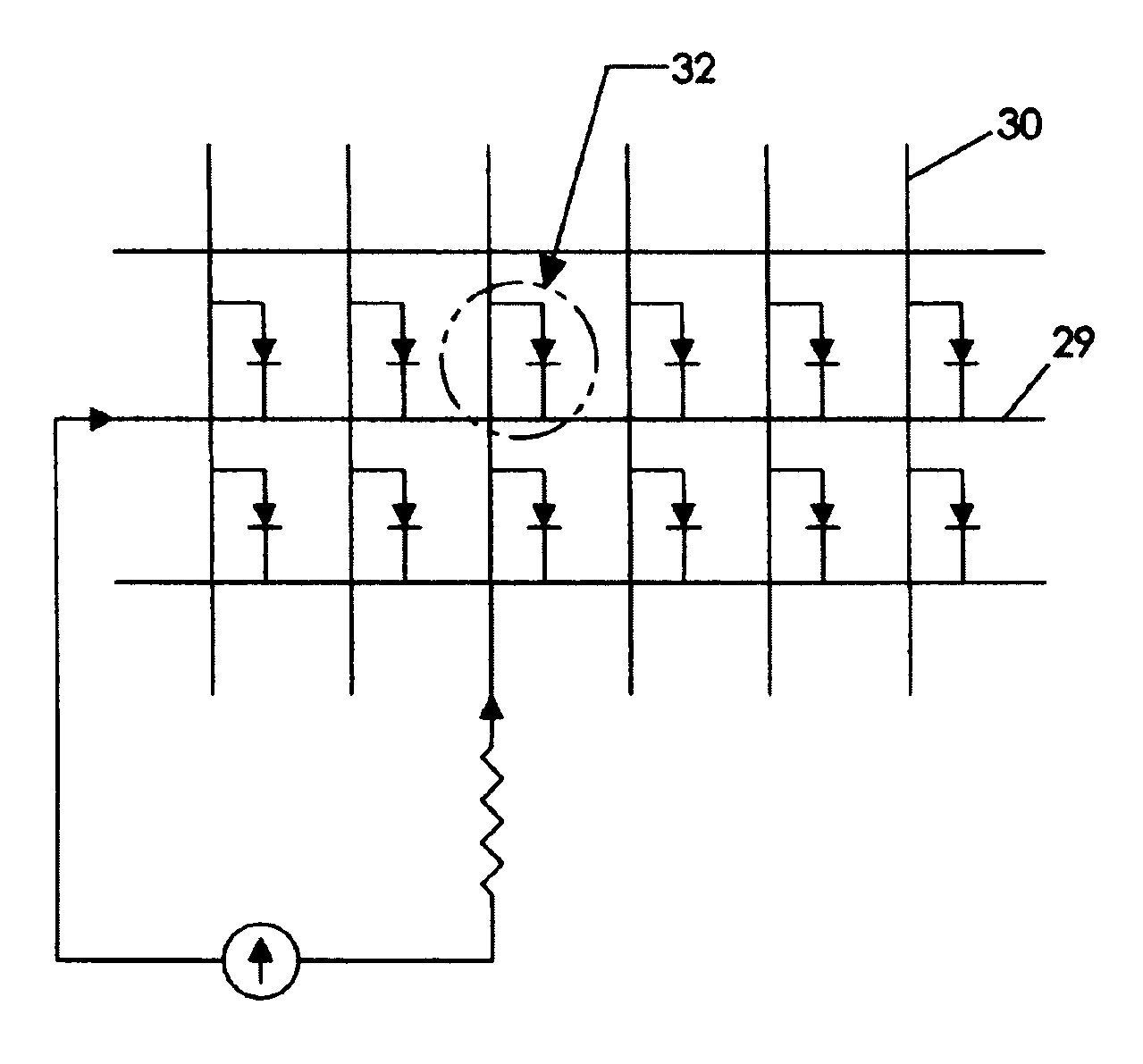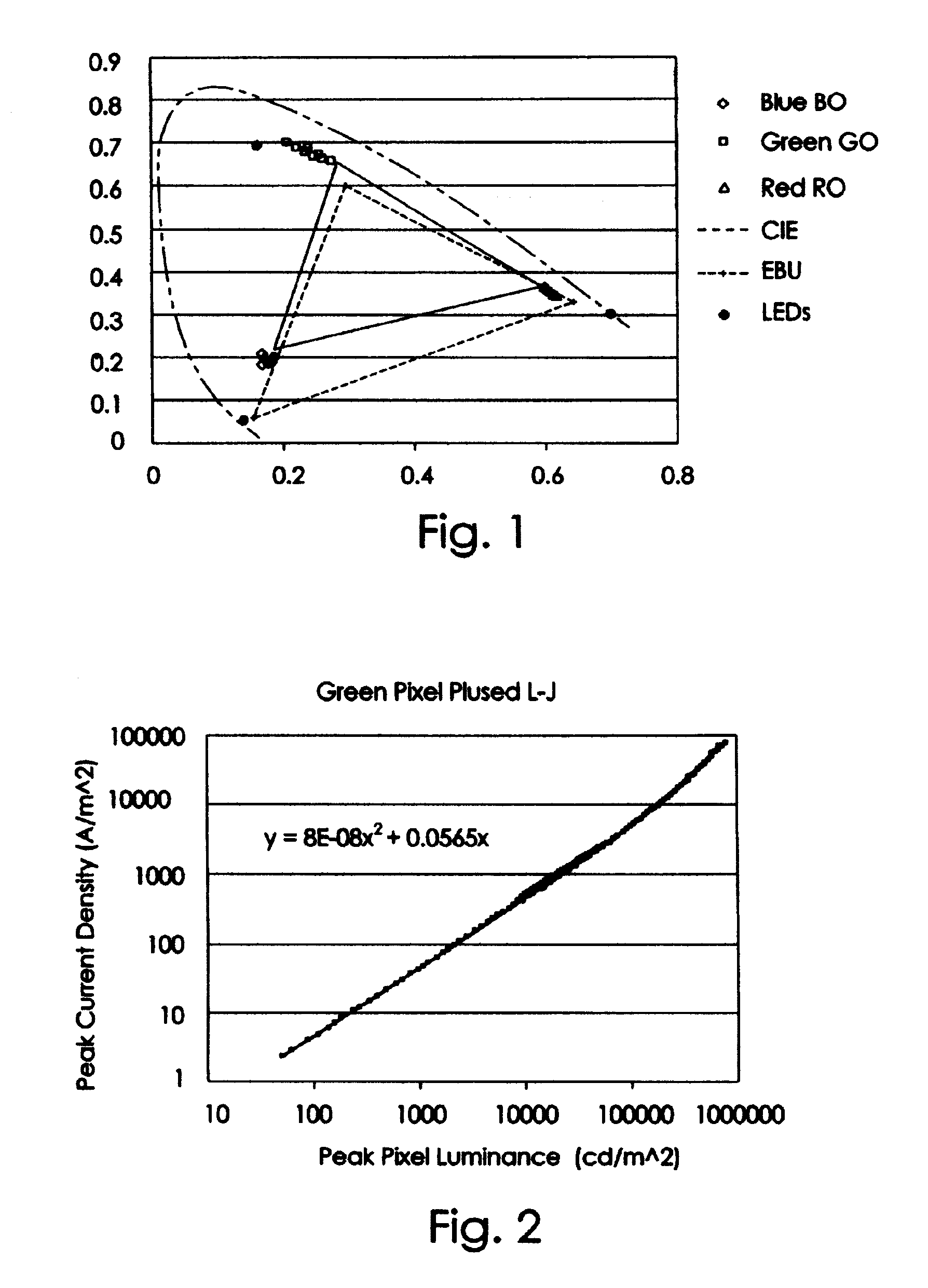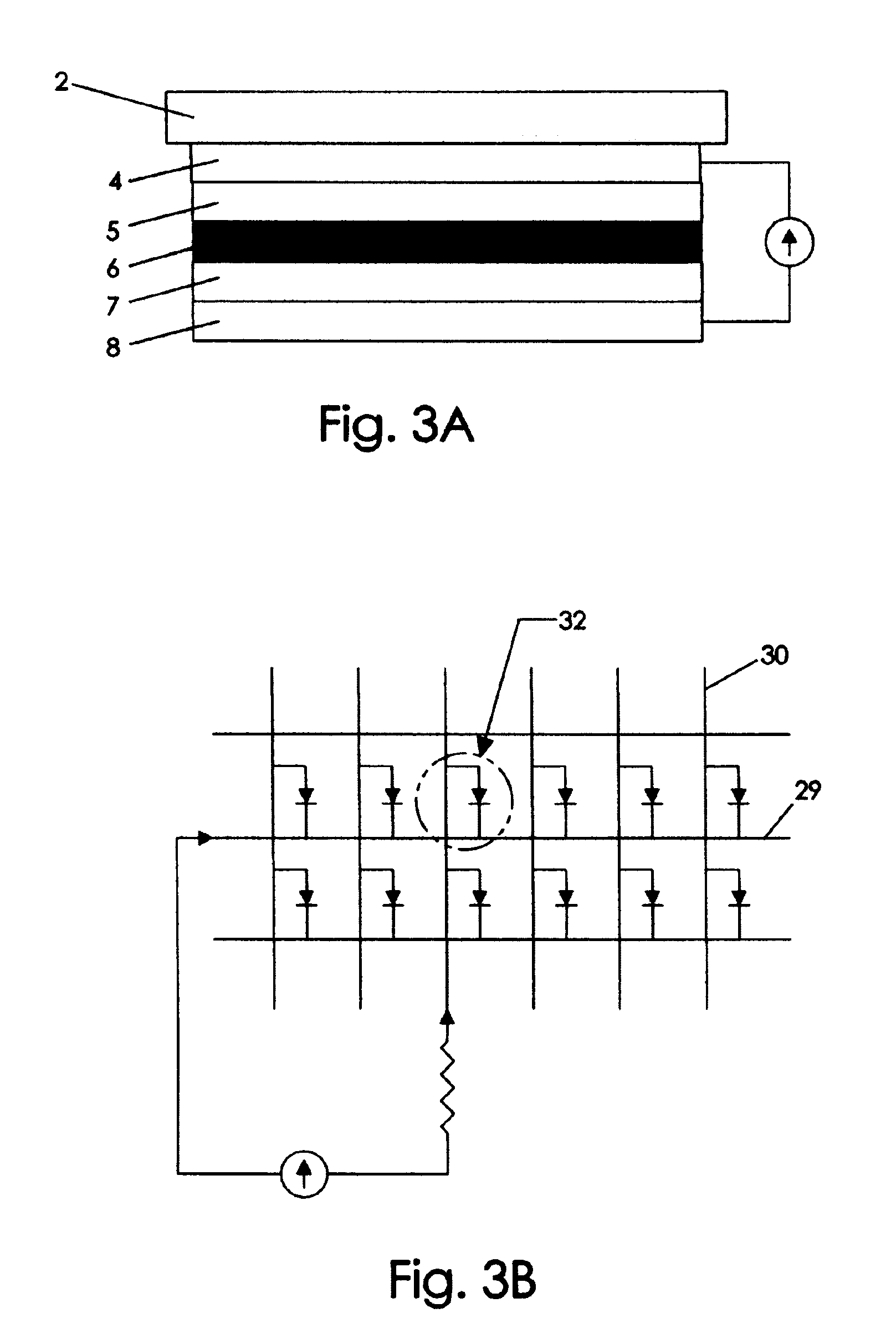Pixel structure with optimized subpixel sizes for emissive displays
a technology of emissive display and subpixel size, which is applied in the direction of visual presentation, instruments, semiconductor devices, etc., can solve the problems of code execution that may consume data relating to the display, and achieve the effect of optimizing the battery life and optimizing the lifetime of one or more elements of the display
- Summary
- Abstract
- Description
- Claims
- Application Information
AI Technical Summary
Benefits of technology
Problems solved by technology
Method used
Image
Examples
Embodiment Construction
[0035]The present invention will be described with reference to certain embodiments and drawings but the present invention is not limited thereto. The skilled person will appreciate that the present invention has wide application with displays. The present invention will mainly be described with reference to OLED materials, however it may find advantageous use with a wide variety of emissive materials (both luminescent and phosphorescent materials).
[0036]In the following an emissive pixel structure refers to an emissive, fixed format pixel which may comprise a number of pixel elements, e.g. red, green and blue pixel elements. Each color element may itself be made up of one or more sub-elements. Hence, a pixel structure may comprise sub-pixel elements. A pixel structure may be monochromatic or colored. Further, the array may be a passive or active matrix.
[0037]A known method of manufacture of OLED displays which may be used with the present invention results in a pixel structure as s...
PUM
 Login to View More
Login to View More Abstract
Description
Claims
Application Information
 Login to View More
Login to View More - R&D
- Intellectual Property
- Life Sciences
- Materials
- Tech Scout
- Unparalleled Data Quality
- Higher Quality Content
- 60% Fewer Hallucinations
Browse by: Latest US Patents, China's latest patents, Technical Efficacy Thesaurus, Application Domain, Technology Topic, Popular Technical Reports.
© 2025 PatSnap. All rights reserved.Legal|Privacy policy|Modern Slavery Act Transparency Statement|Sitemap|About US| Contact US: help@patsnap.com



